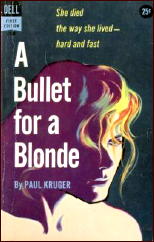Sun 17 Apr 2016
BRENNER. “False Witness.” CBS; 6 June 1959. (Season 1, Episode 1.) Edward Binns, James Broderick. Guest Cast: Frank Overton, Kay Medford, Alan Ansara, Michael Conrad, with Dana Elcar (uncredited). Written by Loring Mandel. Director: Gerald Mayer.
The series as a whole was reviewed here on this blog by Ted Fitzgerald almost seven years ago soon after a box set of DVDs was released. Now that I’ve watched the first episode, I’m impressed enough to want to see more.
Ted described it as “character-driven drama about two New York City cops, Roy Brenner (Edward Binns) a veteran member of The Confidential Squad (aka Internal Affairs), and his son Ernie (James Broderick), a rookie detective,” details that for one reason or another weren’t completely nailed down in this first episode.
This one’s about a hack assistant D.A. who wants Ernie to embellish, shall we say, his testimony against a man accused of splashing a container of lye in his wife’s eyes. No one saw the crime itself. The man says the lye was hers (in more ways than one) and she spilled it on herself.
The D.A. guy puts all kinds of pressure on Ernie, but in the end he (spoiler) does the right thing. According to Wikipedia, the series was “filmed live,” by people who knew something about telecasting live TV. This particular episode begins with some interesting long tracking shots, and facial closeups are used to very good advantage. Skilled people were at work here.
As for the guest cast, Kay Medford has the acting ability to make her quirky character, the victim of the attack, even more interesting than the lines she has to say, and Alan Ansara, as the cellmate of the accused assailant, sounds very much like Robin Williams to me in his exaggerated way of trying to say whatever he thinks he needs to that will earn him rewards from the police and D.A.’s office.
What I found unusual, and the problem I alluded to above, is that there was no effort to “introduce” the characters. We do not even know who the younger Brenner is until he’s spoken to by name about ten minutes into the program. The father, Edward Binns, does not appear until there’s only two minutes to go. As he is sitting there in the courtroom awaiting the trial to begin as someone we have net seen before, the young Brenner sits next to him and calls him Dad. Presumably he has bigger roles in future episodes.
